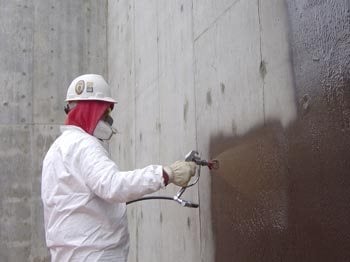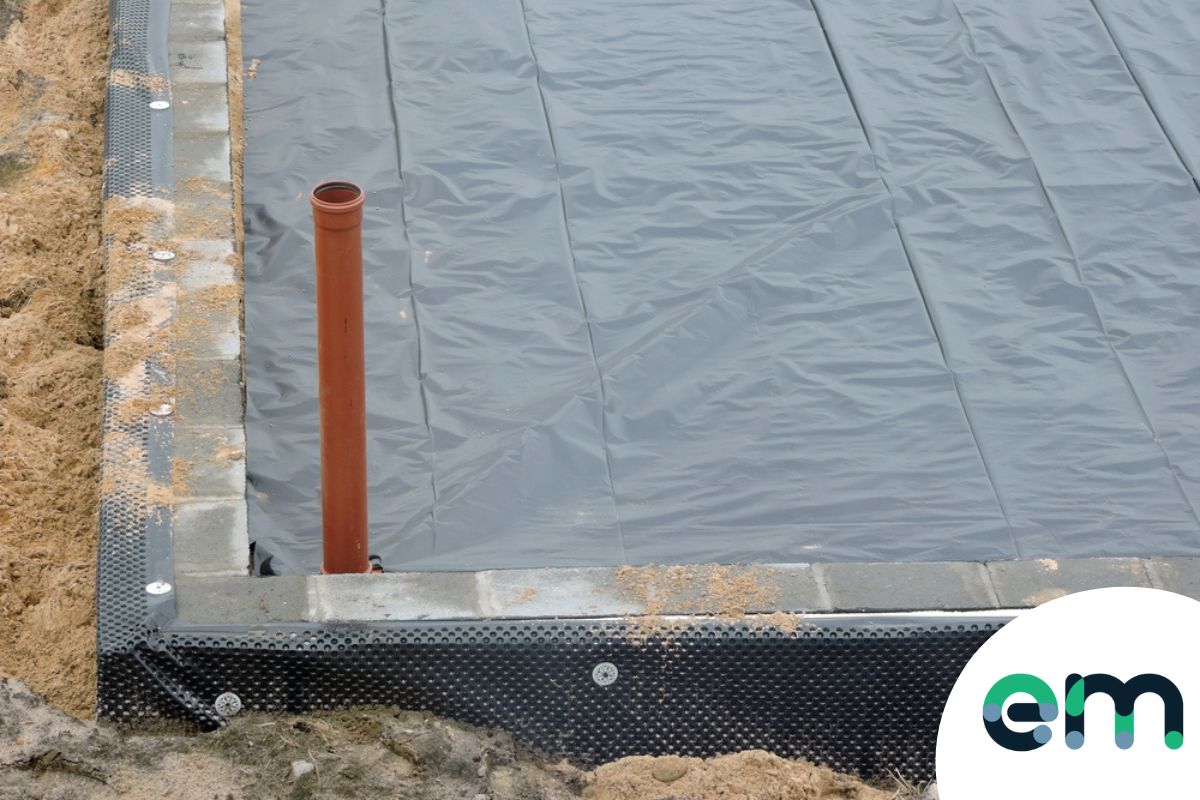Discovering the Various Techniques and Solutions for Effective Damp Proofing
Moisture in buildings presents significant challenges to both architectural stability and interior air top quality. Various methods and remedies have arised to battle this prevalent issue. From traditional damp-proof membranes to ingenious chemical therapies, each approach offers distinct advantages. Understanding these choices is important for efficient dampness control. Nonetheless, picking the right service depends upon certain structure problems and requirements, triggering additional expedition right into one of the most efficient moist proofing methods readily available.
Comprehending the Sources Of Wetness
Although dampness can develop from numerous sources, comprehending these reasons is essential for reliable removal. Commonly, moisture stems from three key sources: climbing damp, penetrating wet, and condensation. Increasing damp takes place when groundwater takes a trip up-wards through porous materials, such as block or stone, commonly because of a lack of an effective obstacle (mould treatment newcastle). Penetrating damp is commonly triggered by exterior aspects, including roofing leaks, damaged rain gutters, or damaged wall surfaces, allowing water to infiltrate a building. Condensation, on the other hand, arises from excess wetness in the air, often worsened by poor ventilation and temperature level differences, resulting in water beads developing on surface areas. Identifying these underlying problems is essential, as each sort of wetness needs a customized approach for remediation. Correct assessment aids in figuring out one of the most effective services, ultimately safeguarding the structural stability of a structure and enhancing indoor air top quality
Traditional Damp-Proof Membranes

Chemical Damp-Proofing Solutions
Chemical damp-proofing remedies offer an ingenious strategy to stop wetness intrusion in buildings. These methods usually include the application of liquid chemicals that permeate stonework and develop a barrier versus climbing wet. Generally utilized chemicals include silanes, siloxanes, and other water-repellent agents that respond with surface area products to develop a hydrophobic layer.The application procedure normally needs boring holes into the wall surfaces, injecting the chemical solution, and allowing it to heal. This method is particularly useful for older frameworks where typical damp-proof membrane layers may be not practical. Moreover, chemical damp-proofing can be less disruptive and more cost-effective than extensive renovation projects.While reliable, these remedies depend on proper application and ecological problems for peak performance. Routine maintenance and surveillance are necessary to ensure the long life of the damp-proofing treatment. On the whole, chemical damp-proofing represents a versatile choice for securing structures versus moisture-related damages
Cavity Wall Building Methods
Tooth cavity wall construction methods offer many advantages, especially in dampness control and energy effectiveness. By including an air gap between 2 layers of stonework, these wall surfaces effectively alleviate water access while enhancing insulation. This combination not only shields frameworks from dampness yet likewise adds to reduced energy usage.
Advantages of Cavity Wall Surfaces
When considering efficient moist proofing approaches, the benefits of tooth cavity wall surfaces attract attention plainly. Tooth cavity wall surfaces are composed of 2 different layers, producing an air space that efficiently decreases dampness infiltration. This design lessens the threat of wetness, as the external wall surface works as an obstacle versus rainfall and water access. In addition, tooth cavity wall surfaces enhance thermal insulation, which adds to energy effectiveness by decreasing warm loss. They also offer sound insulation, helping to create a quieter interior setting. In addition, the air void enables air flow, which helps in wetness control and minimizes the likelihood of mold and mildew growth. These advantages not just enhance the general comfort of a structure however likewise add to its durability and architectural stability.
Moisture Control Strategies
Reliable wetness control strategies are critical in cavity wall building to assure long-term security versus wetness. One primary technique involves the consolidation of weep holes, which promote water drain from the cavity, preventing build-up. In addition, using breathable membrane layers can assist manage moisture levels while allowing entraped vapor to leave. Proper positioning of insulation is likewise crucial, as it should not obstruct water drainage paths. Guaranteeing that the outer leaves of the cavity wall are built with water-resistant materials boosts total sturdiness. Routine maintenance checks are important to determine any blockages or damage early, guarding the structure's stability. Inevitably, a mix of these techniques forms a durable defense versus dampness invasion in cavity walls.
Insulation and Energy Efficiency
Insulation plays a vital duty in improving energy effectiveness within dental caries wall construction. By incorporating shielding products, these wall surfaces create a thermal barrier that reduces heat loss and minimizes energy consumption. Reliable insulation not only aids keep a secure indoor temperature level but likewise alleviates the threat of wetness, as it avoids condensation within the wall surface tooth cavity. Numerous methods, such as using stiff foam boards or mineral wool, can be used to achieve excellent insulation efficiency. Furthermore, correct installment is important to assure that gaps and voids are reduced, which can or else compromise power performance. Inevitably, a well-insulated tooth cavity wall surface adds greatly to overall sustainability and lowers heating & cooling costs for house owners.
Outside Damp Proofing Approaches
External damp proofing approaches are essential for securing frameworks from moisture seepage. 2 efficient strategies include the application of water-proof membrane layers and the setup of French drains. These services assist minimize water build-up and protect the stability of structures.
Waterproof Membrane Application
While numerous approaches exist for stopping wetness ingress, the application of water resistant membranes continues to be a highly reliable external wet proofing technique. These membrane layers are normally made from products such as polyethylene, rubber, or customized asphalt, giving a durable obstacle versus water infiltration. The installment process involves applying the membrane to the external surface areas of wall surfaces or structures, ensuring total insurance coverage to avoid leaks. Correct bond and securing at joints are important to optimizing efficiency. Water-proof membranes can be applied in numerous kinds, including liquid finishes and sheet membrane layers, allowing for versatility based upon the particular requirements of the structure. This approach not just protects structures from moisture yet likewise improves their long life and architectural integrity.
French Drainpipe Installment
One efficient technique for managing groundwater and preventing wetness build-up around a structure's foundation is the installment of a French drainpipe. This drainage system consists of a trench full of crushed rock and a perforated pipe that redirects surface water far click here from the structure. Appropriate installation needs cautious planning, making sure that the drainpipe inclines away from the structure to promote suitable water flow. Furthermore, the area of the drainpipe is crucial; it must be placed in areas vulnerable to merging or excess wetness. Normal maintenance, consisting of cleaning particles from the gravel and ensuring the pipe remains unobstructed, is essential for lasting performance. Inevitably, a well-installed French drain can substantially lower the threat of water-related issues in cellars and foundations.
Interior Waterproofing Approaches
Interior waterproofing techniques are vital for securing a building's inside from moisture seepage and possible water damage. These methods normally involve the application of specialized products and techniques made to produce a dampness barrier within the framework. One common approach is making use of water-proof finishes or sealers on wall surfaces and floorings, which stop moisture from passing through surfaces.Additionally, installing interior water drainage systems, such as sump pumps, can efficiently take care of water accumulation in cellars and creep areas. An additional approach entails using vapor barriers, which are mounted to inhibit moisture activity from the ground into living spaces.Moreover, dealing with any cracks or voids in wall surfaces or structures with suitable sealants ensures a complete protection versus water invasion. By executing these indoor waterproofing techniques, homeowner can considerably reduce the risk of mold and mildew growth, architectural damages, and other moisture-related issues. Proper execution of these strategies is essential for lasting defense and structure stability.
Normal Upkeep and Assessment Practices
Normal maintenance and inspection techniques are important for assuring the lasting performance of damp proofing solutions in any kind of structure. Regular checks allow homeowner to identify very early signs of dampness invasion, such as peeling off paint, mold development, and musty odors. These indicators can indicate underlying concerns that require instant attention.Inspections should be conducted a minimum of each year, focusing on vulnerable areas like cellars, crawl rooms, and exterior walls. During these evaluations, homeowner ought to check out sealers, drainage systems, and air flow to confirm they function correctly.Additionally, preserving rain gutters and downspouts is necessary, as stopped up systems can cause water buildup near the structure. Carrying out a regular maintenance schedule, along with prompt repairs, can significantly extend the life-span of damp proofing actions and shield the structural honesty of the building. Proactive steps ultimately add to the total health and wellness of the living setting.
Regularly Asked Inquiries
The Length Of Time Does Damp Proofing Generally Last?
The period of moist proofing efficiency differs, typically lasting in between 20 to half a century. Variables such as application quality, environmental conditions, and upkeep methods significantly affect the longevity of the wet proofing therapy.

Can I Damp Proof My Home Myself?
The private pondered the usefulness of do it yourself damp proofing. With appropriate research and the ideal materials, it is possible. They also identified the value of specialist advice to assure lasting efficiency and protect against future concerns.
What Are the Indications of Inefficient Damp Proofing?
Indicators of inadequate wet proofing include consistent mildewy odors, noticeable mold development, peeling off paint, moist spots on walls, and timber degeneration - damp removal newcastle. Home owners need to attend to these problems immediately to avoid additional damages and wellness worries
Does Damp Proofing Affect Indoor Air Quality?

Just How Much Does Expert Damp Proofing Price?
Specialist wet proofing prices differ significantly, generally ranging from $1,000 to $5,000 depending upon the residential or commercial property's dimension, the degree of the moist concern, and picked methods. Each situation needs a tailored evaluation for exact pricing. Generally, moisture stems from 3 main sources: rising wet, permeating moist, and condensation. When taking into consideration efficient moist proofing methods, the benefits of cavity wall surfaces stand out prominently. Outside moist proofing methods are vital for securing frameworks from dampness seepage. While different techniques exist for stopping dampness ingress, the application of waterproof membranes stays a very efficient external damp proofing technique. Indications of inefficient wet proofing include relentless moldy smells, visible mold and mildew growth, peeling paint, damp patches on wall surfaces, and wood degeneration.
Comments on “Highly recommended companies for damp removal newcastle: What to look for”